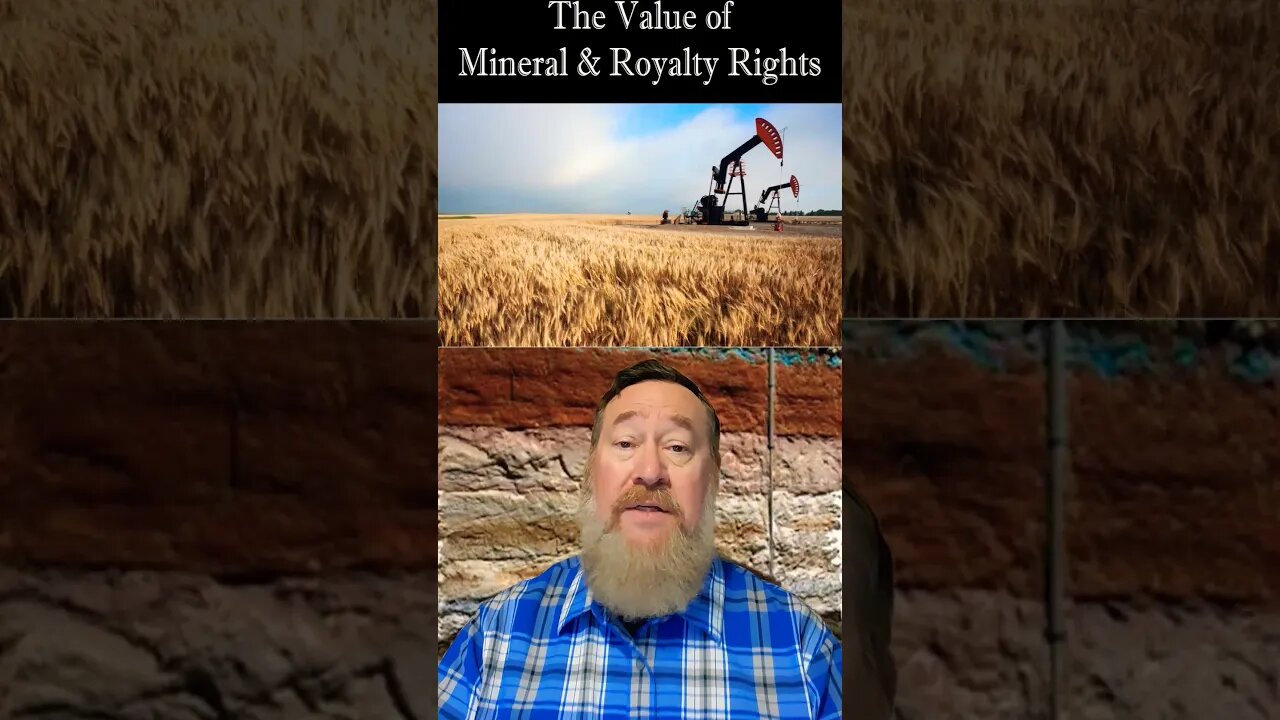Premium Only Content

Value of Mineral and Royalty Rights - Mineral Royalties
Mineral rights and royalty rights hold significant value in the field of natural resource extraction. These rights grant ownership interests in the minerals beneath the surface of a property and the income generated from their extraction. Several factors can influence the value of these rights. Below are five of them.
1. Location:
The location of mineral rights plays a crucial role in determining their value. Areas with extensive drilling activities tend to have higher values. Regions with a history of successful exploration and production, such as established oil and gas fields, are particularly sought after. Favorable geological conditions and proximity to infrastructure and markets also enhance the value of mineral rights.
2. Well Age:
The age of wells associated with mineral rights impacts their value. Newer wells typically experience a decline in production over time. In contrast, older wells offer more stability and may command a higher multiple of income. The predictability and reliability of income from established wells contribute to the value of mineral and royalty rights.
3. Income:
The income generated from mineral and royalty rights directly influences their value. The higher the revenue generated by the extracted minerals, the greater the value of the rights. Factors such as market prices, production volumes, and royalty rates established in lease agreements all contribute to the income potential and, subsequently, the value of these rights.
4. New Wells:
The anticipation of new wells in the near future can significantly impact the value of mineral rights. The exploration and development of new wells often lead to increased production and income potential. The expectation of additional drilling activities attracts investors seeking to capitalize on the projected income growth, thereby raising the value of mineral and royalty rights.
5. Future Activity:
Mineral rights gain value if they offer multiple drilling locations with Proven Undeveloped (PUD) Reserves and stacked pay zones. PUD reserves represent identified resources that have yet to be fully developed. The presence of these reserves, along with stacked pay zones containing multiple oil and gas reservoirs, indicates substantial opportunities for future activity and increased income potential. Consequently, the value of mineral and royalty rights is influenced by the upside potential associated with such prospects.
In summary, the value of mineral rights and royalty rights is influenced by several factors. The location of the rights, the age of the wells, the income generated, the expectation of new wells, and the presence of future drilling opportunities all contribute to their overall value.
Understanding these factors is essential for individuals and investors in making informed decisions regarding the acquisition, management, and potential sale of mineral and royalty rights, maximizing their value and optimizing their investment in the natural resource sector.
If you would like to learn more receiving a royalty income, feel free to give us a call.
Thank you for watching!
Visit our website. https://mineralroyaltiesgroup.com/
Listen to and like this video then Subscribe to this channel.
Uncover ways to use 1031exchange #funds to #purchase a mineral property.
Do you have a strategy to protect your wealth from #recession #inflation #stagflation #hyperinflation #energycrisis?
We offer FREE reviews if you are evaluating an oil well drilling or re-work deal. Give us a call or send us an email.
#oilandgas #energy #renewableenergy #offshore #oilfield #petroleum #naturalgas #energytransition #fracking #drilling #sustainability #cleanenergy #energyindustry #energyefficiency #fossilfuels #climatechange #carbonfootprint #oilprices #energynews #energysecurity
This video is meant for educational or entertainment purposes only. This video is not a solicitation. I am not a lawyer, CPA, or financial advisor and I am not giving legal, financial, or tax advice.
-
 LIVE
LIVE
The Bubba Army
2 days agoShould RaJa Jackson Be Arrested? - Bubba the Love Sponge® Show | 8/25/25
4,342 watching -
 LIVE
LIVE
FyrBorne
13 hours ago🔴Warzone M&K Sniping: Builds So Strong They Think I'm Hacking
599 watching -
 LIVE
LIVE
BEK TV
2 days agoTrent Loos in the Morning - 8/25/2025
2,962 watching -
 4:23
4:23
Blackstone Griddles
15 hours agoEasy Salmon Dinner on the Blackstone Griddle
19.4K1 -
 8:10
8:10
WhaddoYouMeme
1 day ago $0.02 earnedChristians, Before You See “Testament”, Watch this!
2.34K4 -
 8:42
8:42
Freedom Frontline
14 hours agoDurbin’s Trump Smear Video Just HUMILIATED Him in the Senate
3.62K -
 10:56
10:56
ariellescarcella
12 hours agoThe Shocking Divide Among College Voters Sparks Worry For America
2.66K5 -
 13:09
13:09
Forrest Galante
10 hours agoWildlife Expert Reacts To Deadly Australian Animal TikToks
47K4 -
 12:08
12:08
Zoufry
2 days agoThe Mystery of Gaddafi's Final 24 Hours
8.67K11 -
 18:25
18:25
Liberty Hangout
13 days agoAnti-Ice Demonstrators Love Poop!
44.4K67